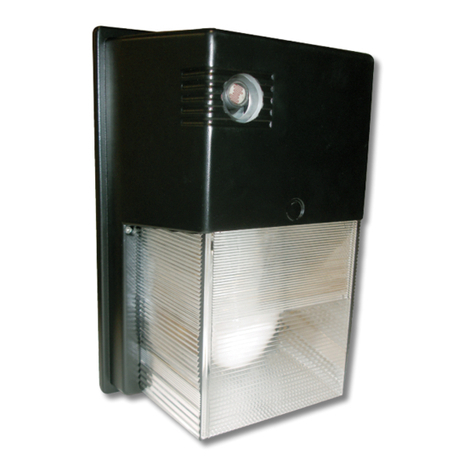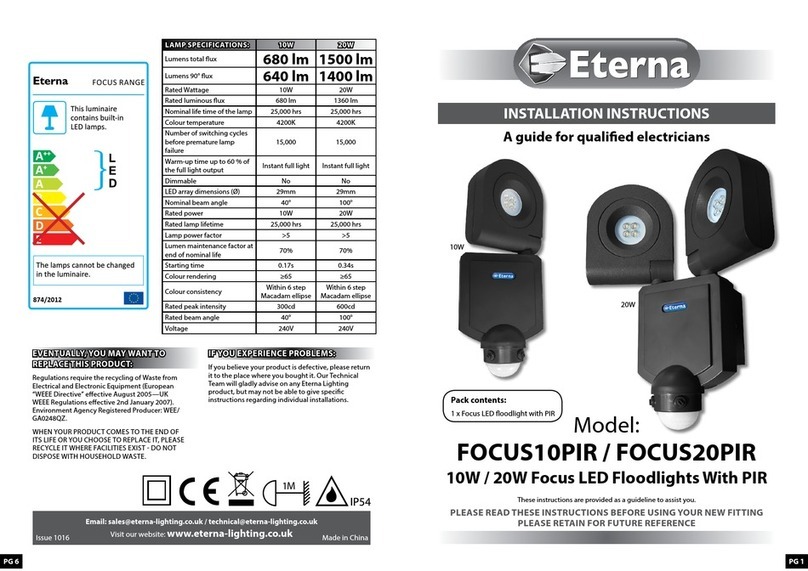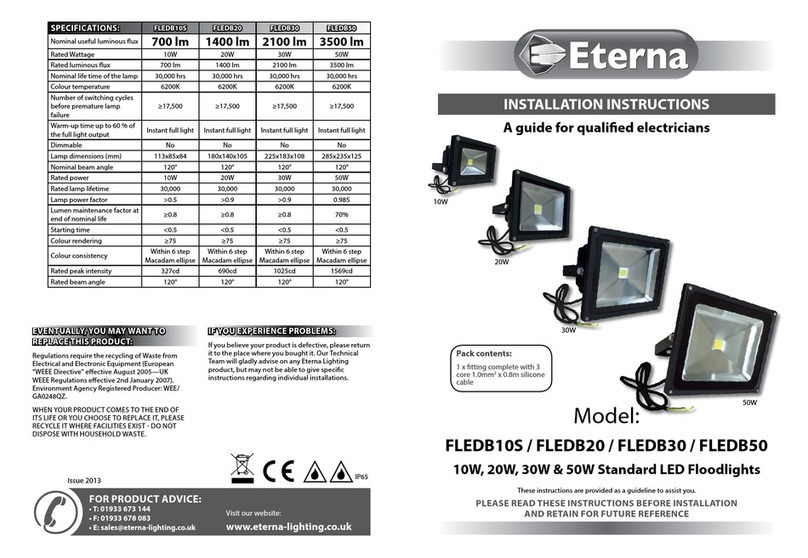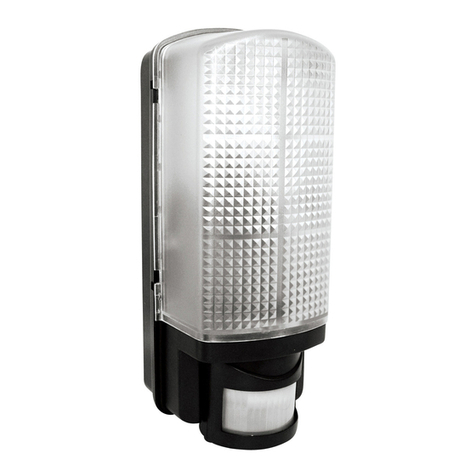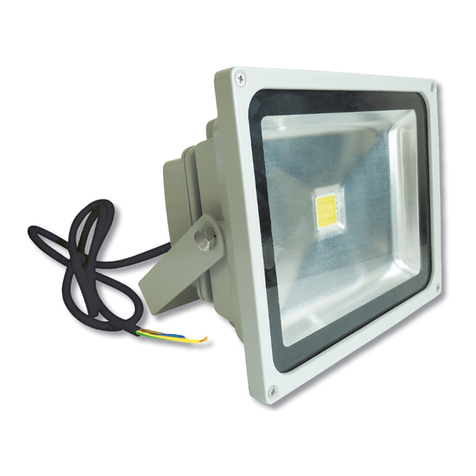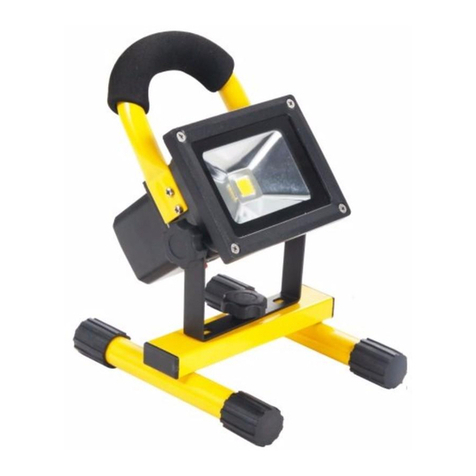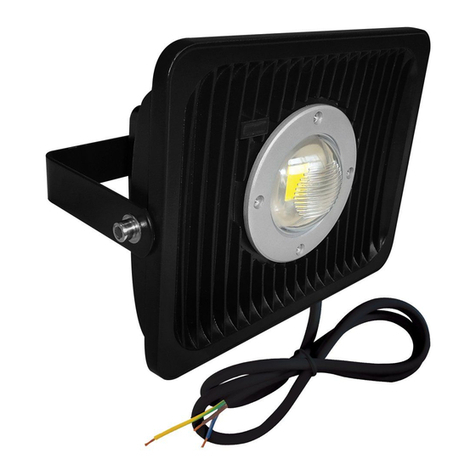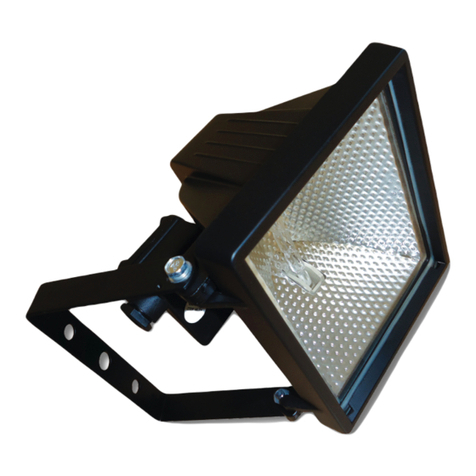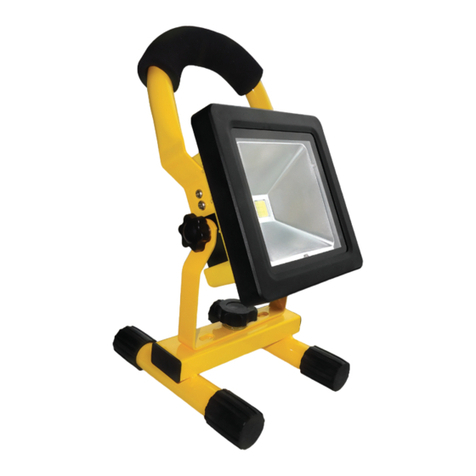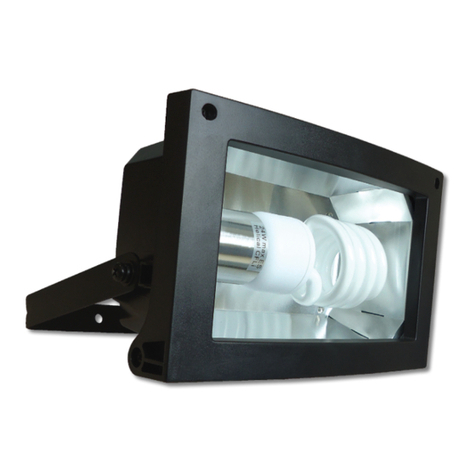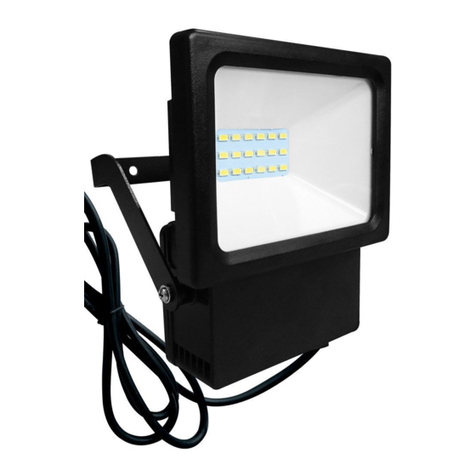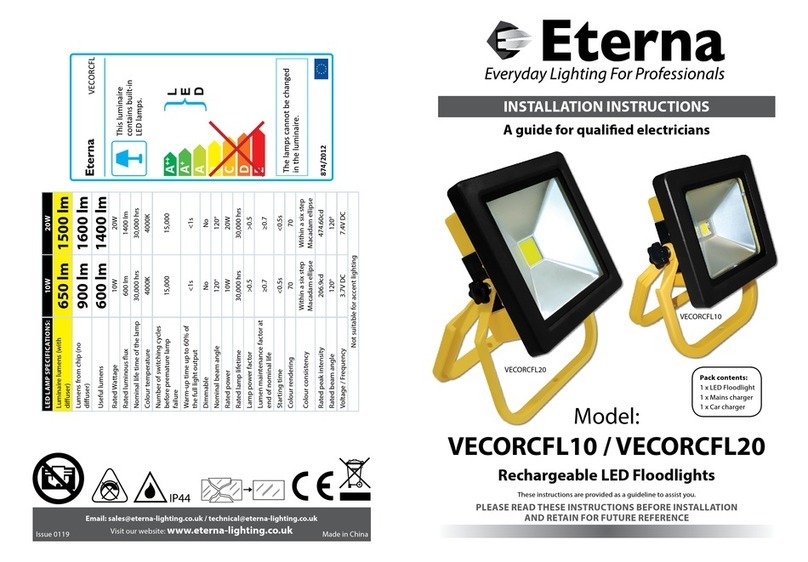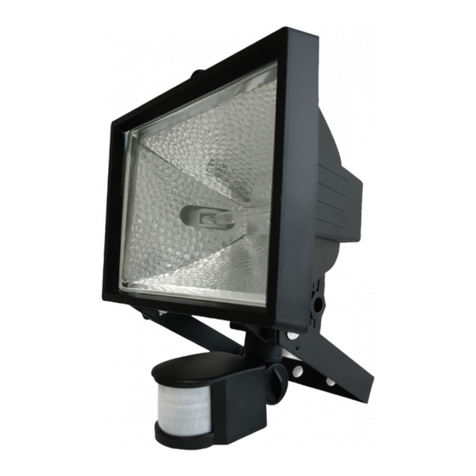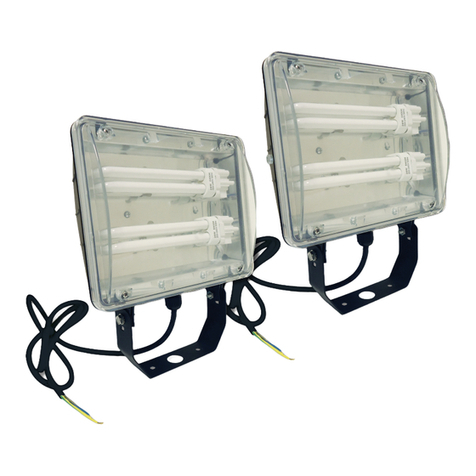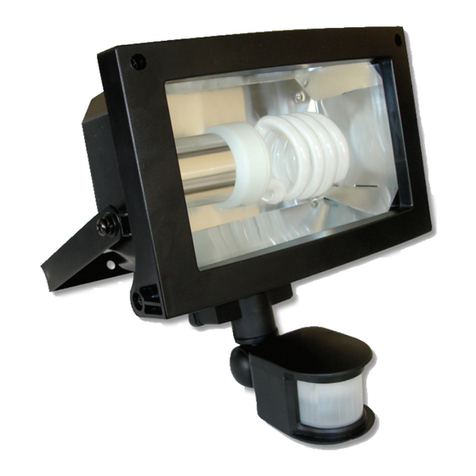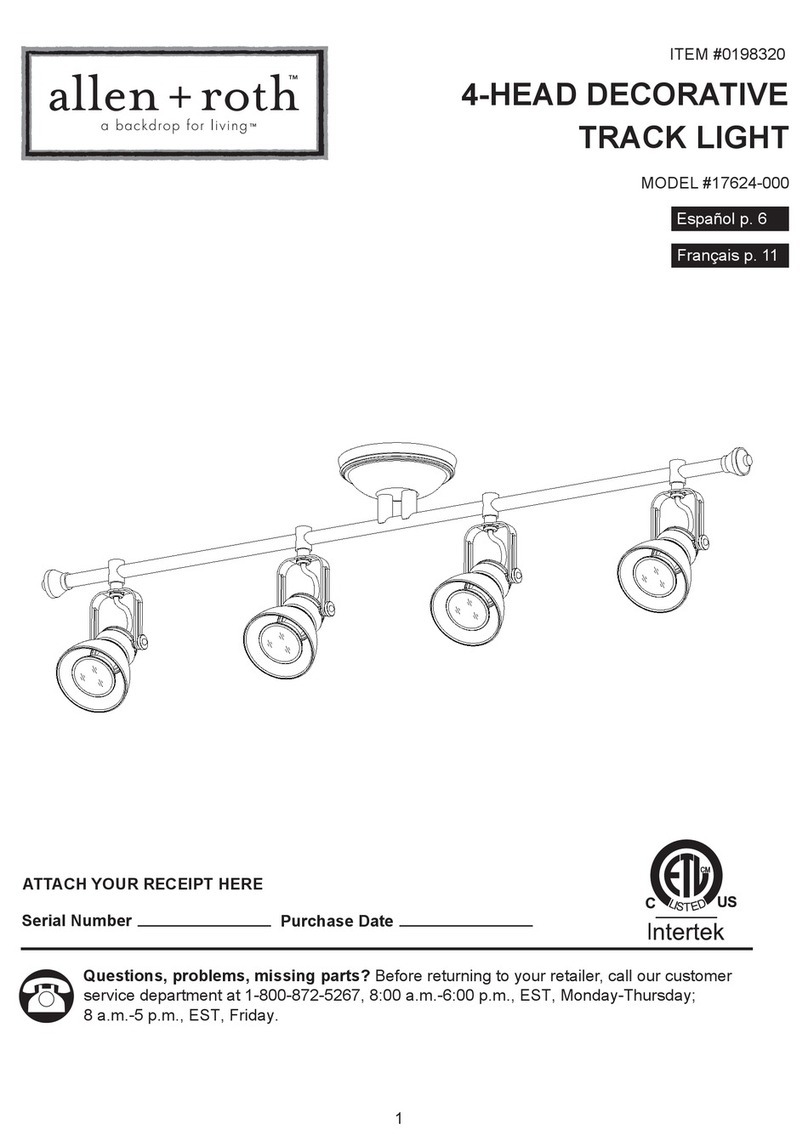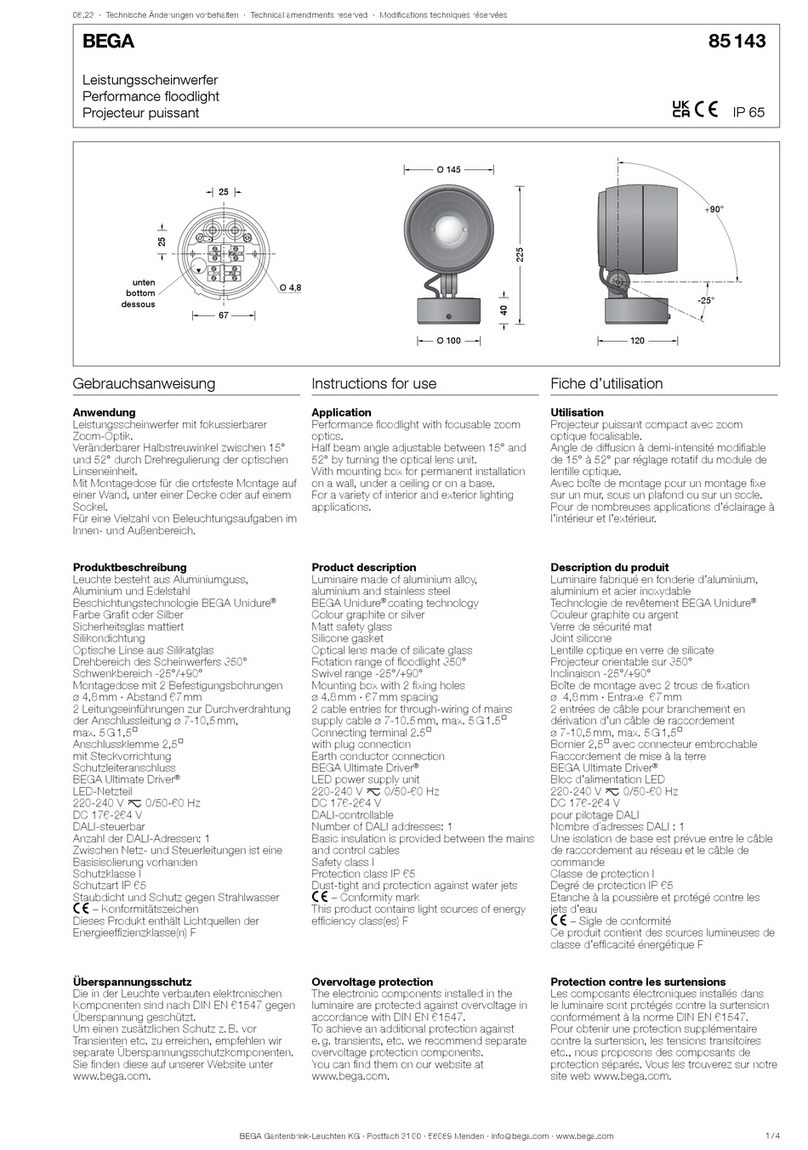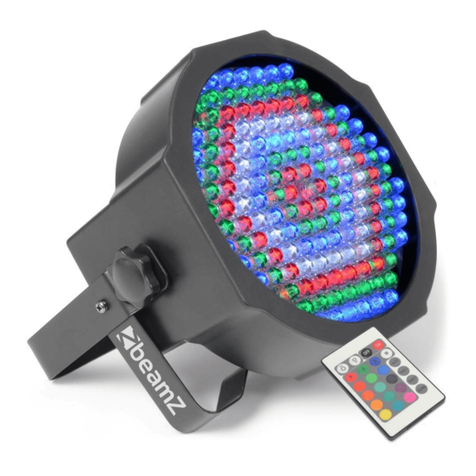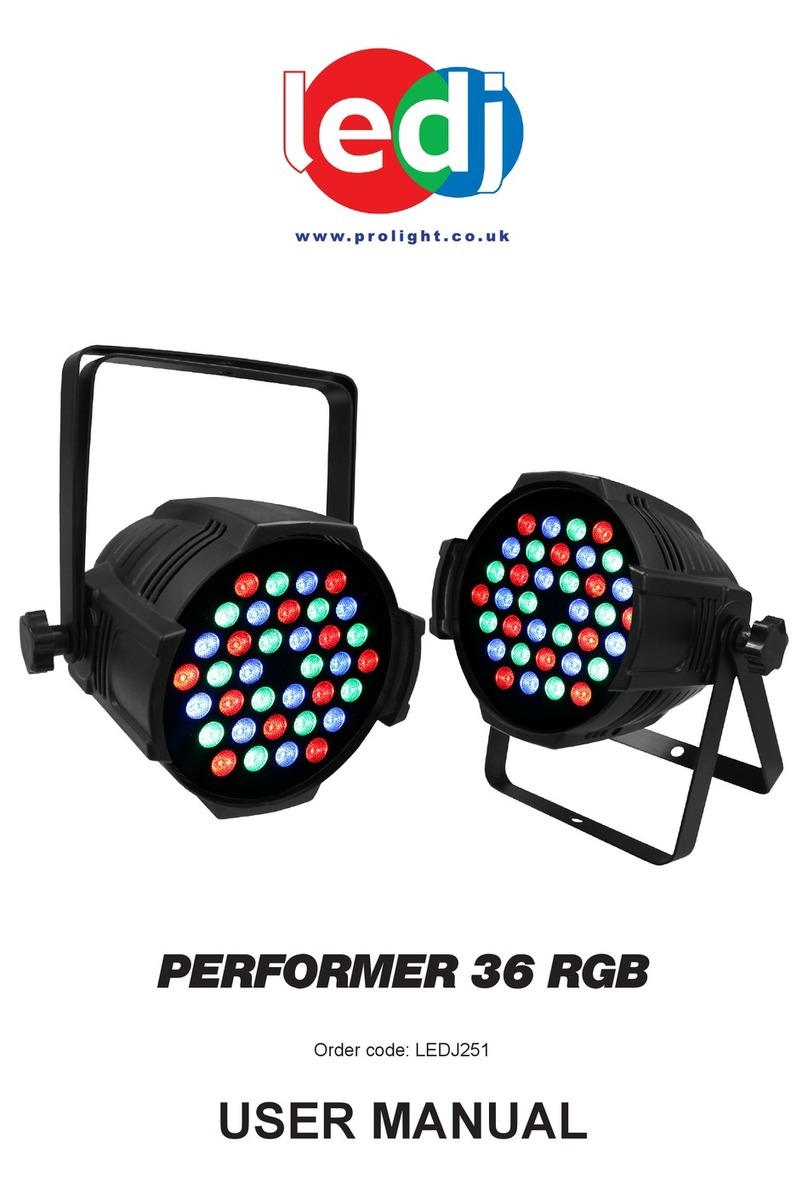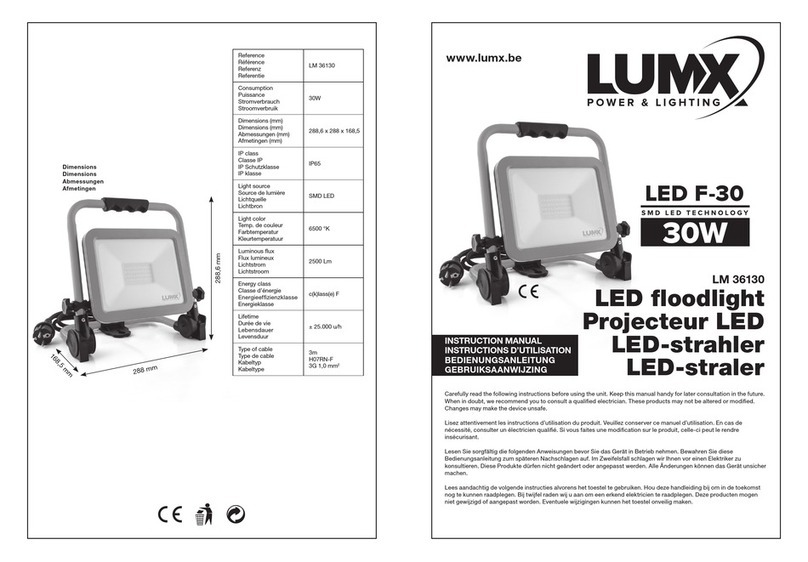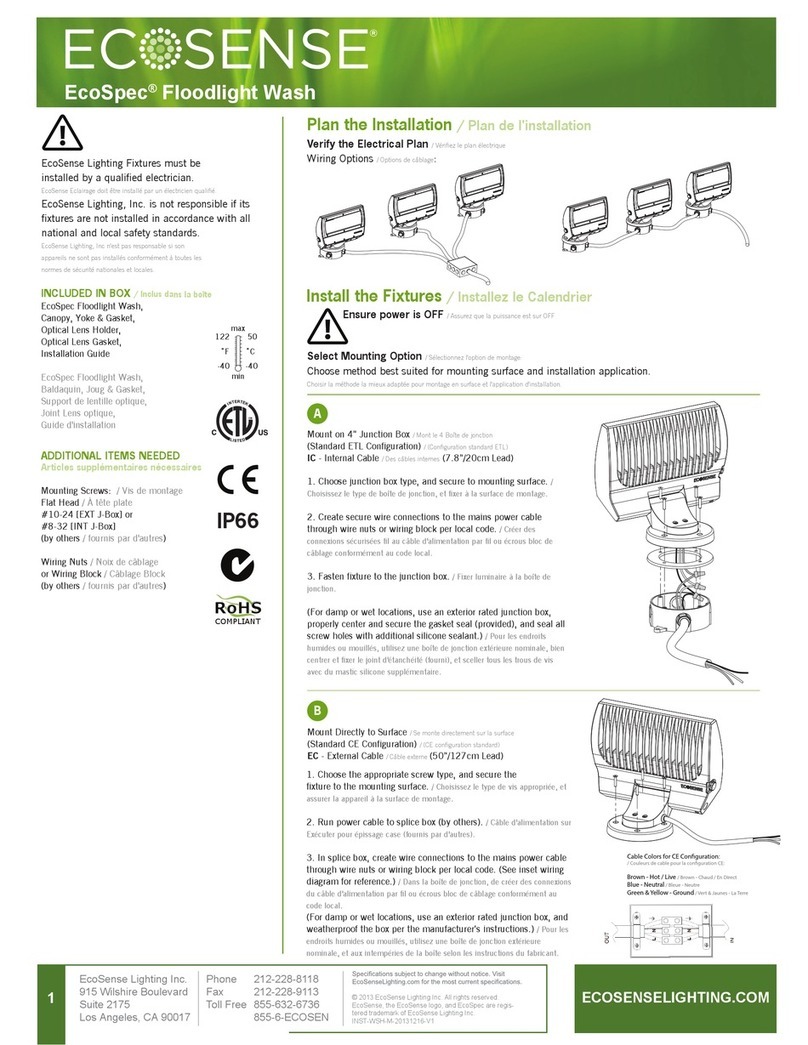
INSTALLATION:
01) Switch o the mains before commencing
installation.
02) Using the bracket as a template mark and then
drill the appropriate xing holes.
03) Secure the bracket with suitable xings.
04) Unscrew connector on back of tting and make
the electrical connections:
Live - Brown / Red
Neutral - Blue / Black
Earth - Yellow / Green
05) Ensure the connector is secured tightly to
maintain IP rating.
06) Adjust the direction of the oodlight and tighten
the xings on the back of the tting.
07) Restore mains power.
08) Adjust the PIR sensor to the desired settings.
UNDERSTANDING THE CONTROLS:
(Please refer to Fig. 5 / 6 below)
ADJUSTING THE DURATION TIME:
The length of time the unit remains switched on
after activation can be adjusted from (10±3) seconds
to (10±3) minutes approximately. Rotating the TIME
screw from (+) to (-) will reduce the duration time.
Note: Once the light has been triggered by the PIR
sensor any subsequent detection will start the timed
period again from the beginning.
ADJUSTING THE LUX CONTROL LEVEL:
The Lux control module has a built-in sensing device
(photocell) that detects daylight and darkness. The
(R) position denotes that the oodlights can work
at day and night, and the () position only work at
night. You can set to operate the unit at the desired
level by adjusting the LUX screw.
SETTING THE CONTROLS WALK TEST:
Turn the Lux control screw to light (R) & ensure
that the TIME control screw is set at the minimum
duration time (-) position. The oodlight will now
switch on and remain on for about 10 seconds after
each detection.
01) Adjust time control to required setting.
02) To set the light level at which the oodlight will
automatically switch “on” at night, turn the LUX
control screw from daylight (R) to night (). If
the oodlight is required to switch on earlier, e.g.
dusk, wait for the desired light level, then slowly
turn the LUX control screw towards daylight while
someone walks across the center of the area to
be detected. When the oodlight switches on
stop adjusting. You may need to make further
adjustments to achieve your ideal light level
setting.
50W VERSION ONLY ADJUSTING THE
SENSITIVITY:
The sensitivity means the maximum distance which
PIR sensor can be triggered by movement - turning
the SENS knob from (+) to (-) will decrease the
sensitivity.
CLEANING:
• To avoid dust build-up and ensure proper
functioning of the oodlight, please wipe the
sensor lens lightly with a damp cloth every 3
months.
• Disconnect the power and clean the exterior only of
this tting with a moist (not wet) cloth.
• Do not use any chemical or abrasive cleaners.
TROUBLESHOOTING AND USER HINTS:
Note: all passive infra red detectors are more sensitive in cold and dry weather than warm and wet weather.
PROBLEM POSSIBLE CAUSE SUGGESTED REMEDY
Light does not switch on
when there is movement
in the detection area.
1. No mains voltage Check all connections, and MCB Fuses / switches
2. Nearby lighting is too bright Relocate the unit
3. Controls set incorrectly Adjust Lux setting
4. Wired incorrectly Check wiring and conrm its wired as per the
wiring instructions opposite
5. Sensor positioned in wrong direction Relocate the unit
Light switches on for no
apparent reason (false
trigger)
1. Heat sources such as air-con, vents, heaters, ues,
other outside lighting, moving cars trees or shrubs
are activating sensor Relocate the unit
2. Interference from on/o switching of electric
fans or lights on the same circuit as your security
oodlight.
(This problem does not always occur but a faulty
switch or noisy uorescent light may cause the
security oodlight to switch on)
Should the false triggering become, troublesome,
consider:
(a) Replacing a faulty switch
(b) Replacing noisy uorescent tubes and/or
starters
(c) Connecting the oodlight to a separate
circuit (in most cases where one or more of
the above suggestions have been carried out,
false triggering has been reduced)
3. Reection from swimming pool, or reective
surface such as smooth white walls Relocate the unit
Light remains on Time is set too long Reduce time
Light remains on at
nighttime Possible heat source in detection zone
Cover PIR sensor lens with a thick cloth, if the
light turns o check detection area for heat or
reective source, reposition head and decrease
the sensitivity setting if this control is available
Light switches on during
daylight hours LUX control screw is set to daylight position Turn the LUX control screw to desired light level
setting
When setting the lux
controls in daylight
the detection distance
becomes shorter
Interference by sunlight Re-test at night
Fig 5: 10-30W PIR Controls
Fig 6: 50W PIR Controls
PG 4 PG 5
TIME LUXSENS EVENTUALLY, YOU MAY WANT TO
REPLACE THIS PRODUCT:
Regulations require the recycling of Waste from
Electrical and Electronic Equipment (European
“WEEE Directive” eective August 2005—UK
WEEE Regulations eective 2nd January 2007).
Environment Agency Registered Producer: WEE/
GA0248QZ.
WHEN YOUR PRODUCT COMES TO THE END OF
ITS LIFE OR YOU CHOOSE TO REPLACE IT, PLEASE
RECYCLE IT WHERE FACILITIES EXIST DO NOT
DISPOSE WITH HOUSEHOLD WASTE.
IF YOU EXPERIENCE PROBLEMS:
If you believe your product is defective, please return
it to the place where you bought it. Our Technical
Team will gladly advise on any Eterna Lighting
product, but may not be able to give specic
instructions regarding individual installations.
LAMP REPLACEMENT:
The light source contained in this luminaire
shall only be replaced by the manufacturer,
service agent or a similar qualied person.
CAUTION, RISK OF ELECTRIC SHOCK.



